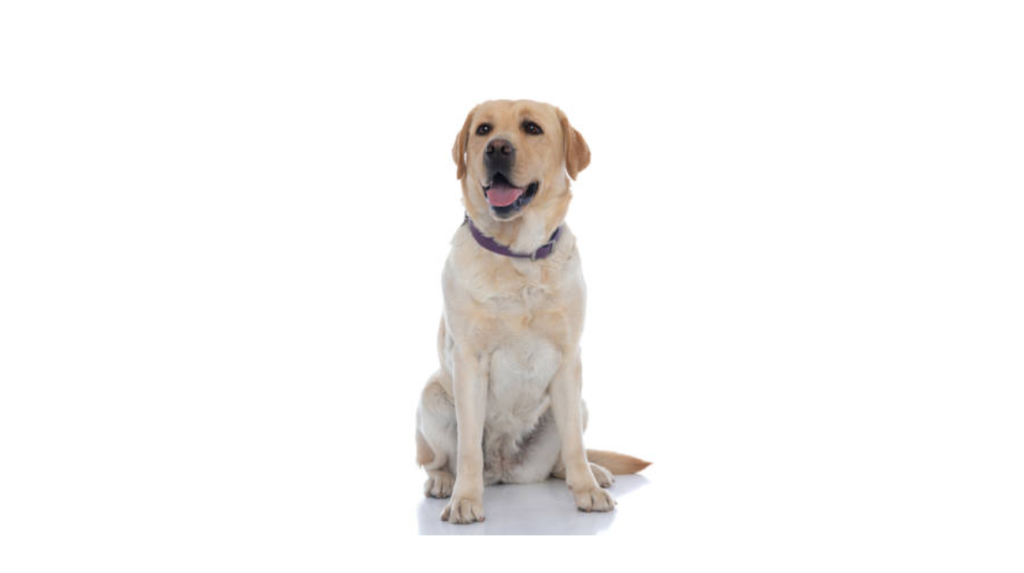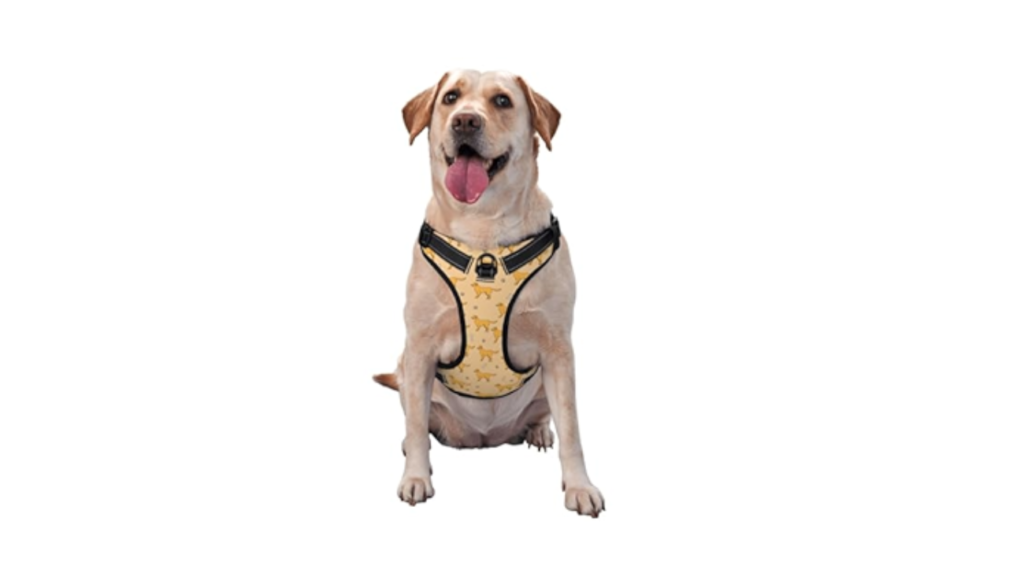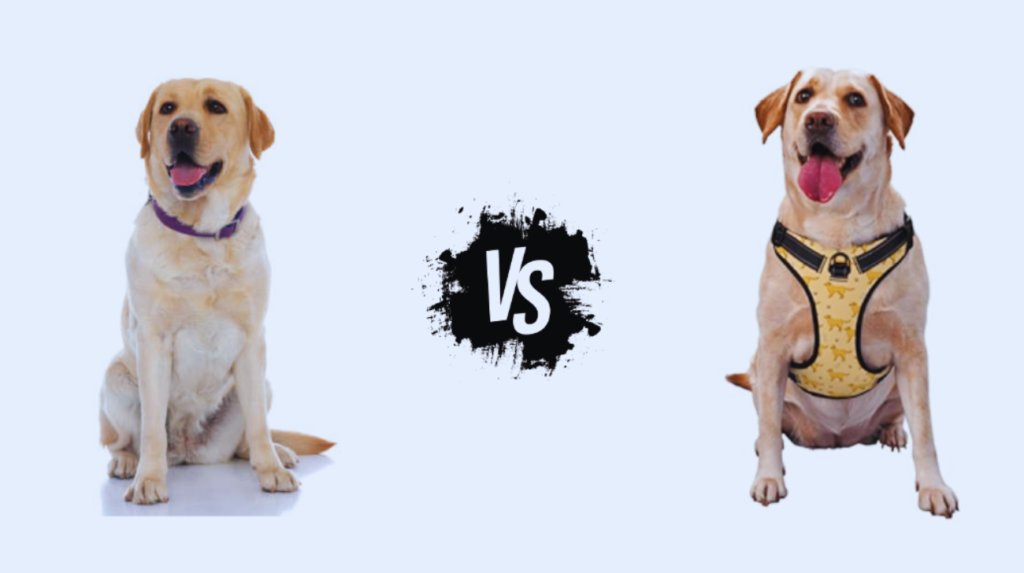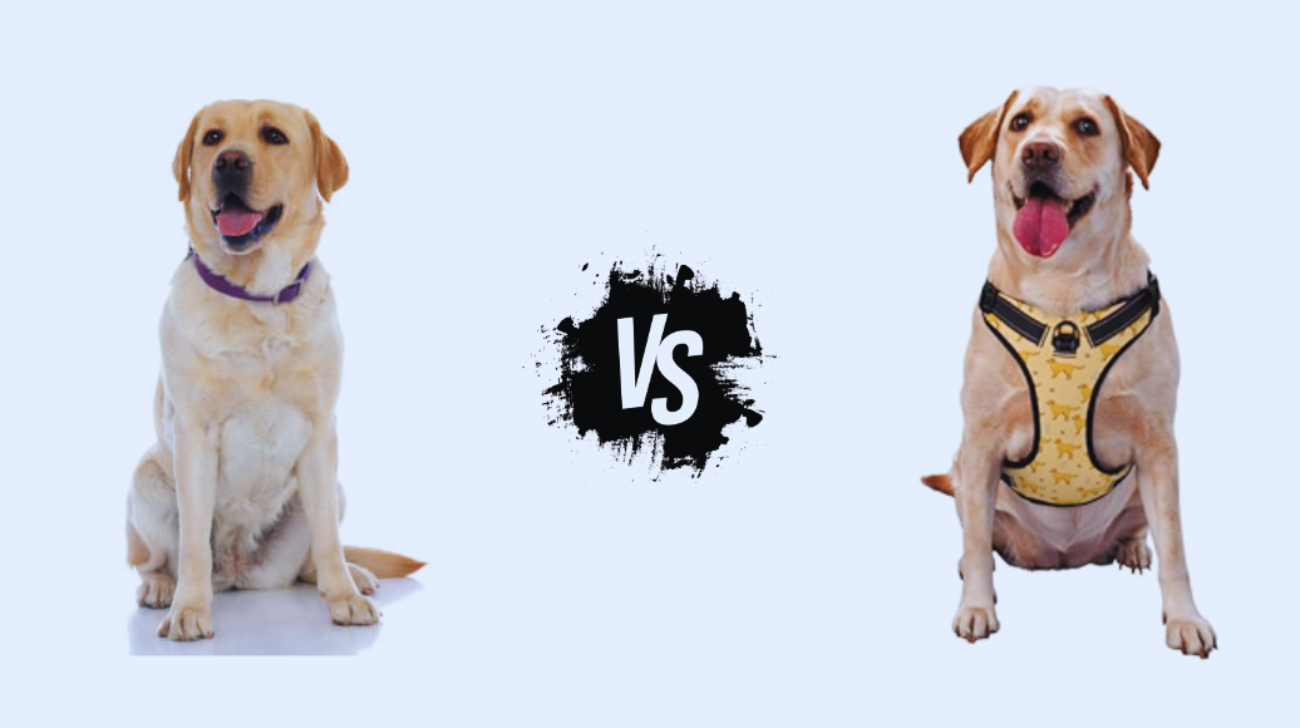Labradors are renowned for their friendly nature, intelligence, and boundless energy. Whether you’re an experienced dog owner or welcoming a Labrador into your home for the first time, one of the pivotal decisions you’ll encounter is choosing between a collar or harness for labrador. This choice is not merely about style; it significantly impacts your Labrador’s comfort, safety, and overall well-being during walks and various activities.
Get insights into what is best for Dachshunds: a collar or harness for their safety, comfort, and health during walks.
Both collars and harnesses offer distinct advantages and are suitable for different scenarios and individual dogs. Understanding your Labrador’s personality, behavior, and specific needs will empower you to make an informed decision. This comprehensive guide delves into the benefits and drawbacks of collars and harnesses, providing expert insights to help you determine the best option for your Labrador.
My Personal Opinion
Having spent several years with Labradors, I’ve observed that the decision between collar or harness for labrador often hinges on the dog’s behavior and health considerations. Harnesses are exceptionally beneficial for Labradors that have a tendency to pull on walks or those with respiratory issues, as they distribute pressure more evenly across the body, reducing strain on the neck.
Collars, conversely, are indispensable for providing direct control during walks and are essential for training basic commands and ensuring safety in various environments. In many cases, the optimal approach may involve using both tools appropriately to address different situations effectively.
Blog Highlights
ToggleWhat Is a Collar?
A collar is a band worn around a dog’s neck, serving multiple purposes including identification and control. It is the most traditional form of dog accessory and plays a crucial role in daily dog management.
Explore the best dog collars for French Bulldogs to keep them comfortable while ensuring durability and style.

Key Features of a Collar:
- Material Variety: Collars are available in a range of materials such as nylon, leather, and biothane, each offering different levels of durability and comfort.
- Adjustable Fit: Most collars are adjustable to ensure a snug yet comfortable fit, preventing slipping or choking.
- Attachment Points: Collars typically feature D-ring attachments for leashes, allowing for easy connection and control.
- Styles: Options include flat collars, martingale collars, and breakaway collars, each designed for specific needs and preferences.
Benefits of the Collar:
- Identification: Collars are essential for holding ID tags, which are crucial if your Labrador gets lost.
- Training Tool: Collars provide a direct means of control, making them effective for training basic commands and leash manners.
- Simplicity and Convenience: Collars are easy to put on and take off, making them convenient for daily use.
- Variety of Designs: With countless styles and colors available, collars allow for personalization and matching with your dog’s personality.
Limitations of the Collar:
- Neck Strain: Pulling or tugging on the leash can cause strain or injury to your dog’s neck, especially in strong pullers.
- Limited Pressure Distribution: Collars focus pressure on the neck, which can be problematic for dogs with respiratory issues or sensitive throats.
- Potential for Choking: If a dog gets caught on something, a collar can tighten and pose a choking hazard.
What Is a Harness?
A harness is a device worn around a dog’s chest and shoulders, designed to distribute pressure more evenly across the body rather than concentrating it on the neck. Harnesses come in various designs, including front-clip, back-clip, and dual-clip options, each suited for different training and walking needs.
Understand if French Bulldogs can wear dog collars and how it affects their neck structure and overall health.

Key Features of a Harness:
- Pressure Distribution: Harnesses distribute force across the chest and shoulders, reducing strain on the neck and preventing choking.
- Multiple Attachment Points: Front-clip harnesses are excellent for training, back-clip harnesses are ideal for casual walks, and dual-clip harnesses offer versatile use.
- Adjustable Fit: Straps allow for customization to ensure a secure and comfortable fit, accommodating growth or weight changes.
- Variety of Designs: Includes no-pull harnesses, step-in harnesses, and vest-style harnesses to cater to different preferences and needs.
Benefits of a Harness:
- Reduces Neck Strain: Ideal for dogs with respiratory issues or sensitive necks, as it eliminates pressure on the throat.
- Better Control Over Pulling: Front-clip harnesses are particularly effective for training strong pullers, redirecting their movement without discomfort.
- Prevents Injuries: Safer for dogs with tracheal or spinal problems by avoiding neck strain and potential injuries.
- Escape-Proof Options: Some harnesses are designed to prevent even the most determined escape artists from slipping out.
- Enhanced Comfort: Padded harnesses reduce the risk of chafing and irritation during walks, ensuring your Labrador remains comfortable.
Limitations of a Harness:
- Bulkier Than Collars: Harnesses can feel restrictive or cumbersome if not fitted properly, potentially hindering movement.
- Training Needed: Some dogs may resist wearing a harness initially, requiring patience and gradual introduction.
- Not Ideal for All-Day Wear: Prolonged use can cause chafing or irritation if the harness isn’t well-padded or properly fitted.
Comparing Harness vs Collar for Labradors: Key Differences
Both collar or harness for labrador has distinct advantages based on a Labrador’s needs and the owner’s goals. Let’s compare their features side-by-side:
Detailed Differences Between Harness vs Collar for Labradors
Let’s delve deeper into how harnesses and collars compare in terms of design, safety, training effectiveness, and suitability for Labradors.

1. Design and Structure
Collar: A collar is typically a simple band that encircles the dog’s neck. It is usually made from materials like nylon or leather and features a D-ring for leash attachment. Collars come in various widths and styles to suit different needs.
Harness: A harness consists of multiple straps that wrap around the dog’s chest and shoulders. It often includes a back panel for comfort and durability. Harnesses can have one or more attachment points for the leash, depending on the design.
Key Difference: Collars provide direct control through the neck, while harnesses offer a more comprehensive approach by distributing pressure across the body. This makes harnesses a better option for managing strong pullers and ensuring comfort during extended walks.
Discover what size collar is best for a French Bulldog puppy to ensure both safety and comfort during their growing stages.
2. Control and Effectiveness
Collar: Collars offer direct control over the dog’s movements, making them effective for basic training and maintaining safety. However, they can lead to pulling and neck strain if the dog is strong or untrained.
Harness: Harnesses provide better control over pulling behaviors by distributing the force across the dog’s body. Front-clip harnesses, in particular, are effective for training dogs to stop pulling by redirecting their movement without causing discomfort.
Key Difference: Harnesses are more effective for managing strong pullers and training no-pull behavior, while collars are indispensable for direct control and basic obedience training.
3. Comfort and Safety
Collar: When attached to a collar, leashes can place strain on a Labrador’s neck, potentially leading to discomfort or injury, especially in dogs that pull frequently. Proper fitting is crucial to prevent choking or neck strain.
Harness: Harnesses are generally safer and more comfortable, especially for Labradors with health issues like tracheal or spinal problems. They prevent neck strain by distributing pressure across the chest and shoulders, reducing the risk of injury.
Key Difference: Harnesses offer enhanced comfort and safety for Labradors with health concerns, while collars attached to leashes may cause discomfort if not used properly.
4. Training Effectiveness
Collar: Collars are vital for basic training, allowing owners to teach commands like “sit,” “stay,” and “heel.” They provide a direct means of communication and control during training sessions.
Harness: Harnesses are particularly effective for training Labradors to stop pulling. Front-clip harnesses can discourage pulling by redirecting the dog’s movement, making them a valuable tool for no-pull training.
Key Difference: Harnesses offer specialized training benefits for managing pulling behaviors, while collars are essential for overall obedience and command training.
Learn if Dachshunds need special collars to provide the right support and comfort for their unique body shape.
5. Suitability for Different Dogs
Collar: Collars are suitable for all Labradors, regardless of size or behavior. However, the type of collar (e.g., martingale, flat) may vary based on the dog’s strength and behavior.
Harness: Harnesses are especially beneficial for Labradors that pull heavily, have respiratory issues, or are prone to escaping. They are also ideal for puppies and older dogs that may require extra support during walks.
Key Difference: Harnesses cater to specific needs like pulling and health concerns, making them a versatile option for a broader range of Labradors, while collars are universally necessary for all dogs.
Using the Tools Safely: Essential Tips
Whether you choose a harness or a collar for your Labrador, proper usage is crucial for ensuring your dog’s comfort and safety. Here are some essential tips for using both tools effectively. Discover the benefits of using a harness by reading this guide on should a Collie wear a harness.

How to Use a Collar:
- Choose the Right Collar: Select a collar that is appropriate for your Labrador’s size and strength. A sturdy collar with a secure clasp is essential for strong pullers.
- Proper Attachment: Ensure the collar is securely attached to a well-fitted neck collar to prevent slipping or escaping. The collar should be snug enough to fit two fingers comfortably between the collar and your dog’s neck.
- Training: Use the collar as a training tool to teach commands and reinforce good walking behavior. Avoid yanking or harsh pulling, which can cause injury or fear.
- Regular Inspection: Check the collar for signs of wear and tear, replacing it if necessary to maintain safety.
How to Use a Harness:
- Proper Fit: Measure your Labrador accurately and adjust the harness straps to ensure a snug but comfortable fit. Avoid straps that are too tight or too loose to prevent chafing or slipping.
- Gradual Introduction: Allow your dog to get accustomed to wearing the harness by letting them wear it indoors for short periods before using it outdoors. Reward your dog with treats and praise to create a positive association.
- Secure Attachment: Attach the leash to the appropriate point on the harness (front-clip for training, back-clip for casual walks) to maximize control and effectiveness.
- Monitor for Discomfort: Regularly check for signs of chafing, irritation, or discomfort, adjusting the harness as needed to ensure your Labrador’s comfort.
Safety Considerations:
- Supervision: Always supervise your Labrador when using a leash or harness to prevent accidents and ensure proper usage.
- Positive Reinforcement: Pair the use of these tools with positive reinforcement techniques to encourage good behavior and create a positive walking experience.
- Consult a Professional: If you’re unsure how to use a harness or collar effectively, seek advice from a professional trainer or veterinarian.
FAQs: Harness vs Collar for Labradors
1. What is the main difference between a harness and a collar?
A collar is a band that attaches to a dog’s neck to provide control and hold identification tags, while a harness is a device that fits around the dog’s chest and shoulders, distributing pressure more evenly. Harnesses are particularly beneficial for dogs prone to neck strain or those that pull heavily during walks.
2. Which option is better for Labradors that pull on walks?
Harnesses are typically better for Labradors that pull because they distribute pressure across the chest and shoulders rather than concentrating it on the neck. Front-clip harnesses are especially effective as they redirect the dog’s movement, making it harder for them to pull forward and helping train them to walk calmly on a leash.
3. Are harnesses safer for Labradors with respiratory issues?
Yes, harnesses are safer for Labradors with respiratory issues. By eliminating pressure on the neck, harnesses prevent strain on the throat and airways, making them a better choice for dogs with breathing difficulties or sensitive necks.
4. Can a Labrador wear a harness all day?
It’s not recommended to leave a harness on your Labrador all day. While harnesses are safe for outdoor use during walks and activities, prolonged wear can cause discomfort, chafing, or skin irritation. It’s best to remove the harness when the dog is resting or at home to allow their skin to breathe.
5. Are certain harness styles better suited for Labradors?
Yes, certain harness styles are better suited for Labradors based on their behavior and training needs. Front-clip harnesses are excellent for training and controlling pulling, while back-clip harnesses are ideal for casual walks and providing comfort. Dual-clip harnesses offer versatile attachment points for different walking scenarios.
6. Is a collar attached to a leash sufficient for well-trained Labradors?
For well-trained Labradors that walk calmly without pulling, a collar attached to a leash can work well. However, a harness still offers added safety and control, particularly in environments with distractions or potential hazards. Even for calm dogs, a harness can reduce strain on the neck and provide a secure, comfortable fit.
Wrapping Up
Choosing between collar or harness for labrador depends on your dog’s specific needs, behavior, and your training goals. Collars are essential for providing identification, basic control, and training during walks, making them indispensable for all Labrador owners. Harnesses, on the other hand, offer superior control for strong pullers, reduce strain on the neck, and provide added comfort and safety for dogs with health concerns. For insights on whether Airedales are good off-leash, explore this comprehensive article.
By considering your Labrador’s breed characteristics, temperament, and unique requirements, you can select the tool that best complements your training and lifestyle. Remember, every dog is different, and finding the right fit may involve a bit of trial and error. But with patience and consistency, both harnesses and collars can help you and your Labrador enjoy safe, comfortable, and happy walks together.








